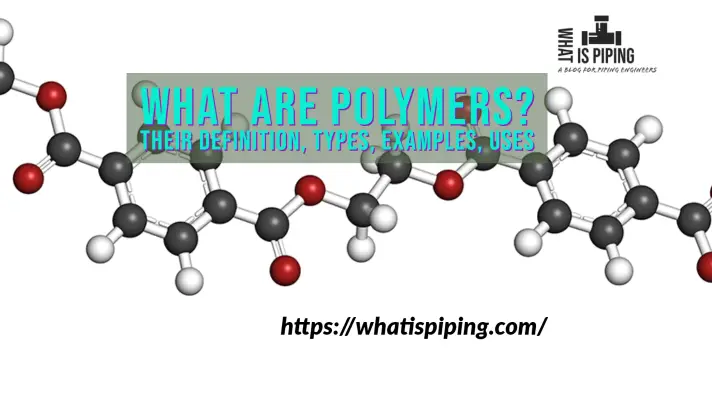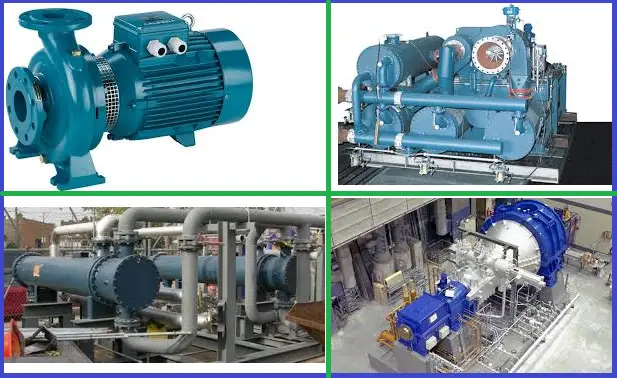It is really difficult sometimes to find out “what actually means what”. PTFE vs Teflon is such an example. Our universe is full of technical jargon, acronyms, and trade names. So, to find out the major differences between PTFE and Teflon, and which one is better between Teflon and PTFE, let’s understand what PTFE and Teflon are all about.
What is PTFE?
PTFE is an acronym or short form of polytetrafluoroethylene, a synthetic polymer consisting of carbon and fluorine. PTFE is originated from tetrafluoroethylene and widely used in a range of applications due to its several unique properties.
Properties of PTFE
The useful properties that make PTFE a versatile product are
High melting point: PTFE has a melting point of around 327°C. They are thermally stable in between -200°C and +260°C. So, it can not be damaged easily by heat and that is the reason PTFE has found extensive applications as non-stick cookware.
Thermal Resistance: Good resistance to heat, light, UV, and weathering.
Hydrophobic: This is a unique property of PTFE. It does not get wet by water or water-containing substances.
Chemically inert: PTFE is highly insoluble and not damaged by the majority of solvents and chemicals.
Low coefficient of friction: The friction coefficient of PTFE is lower than most solids. So it helps PTFE to work as a non-sticky material. That is the reason PTFE plates are sometimes provided below pipe shoes to reduce support friction.
High flexural strength: Even at lower temperatures PTFE retains its ability to bend and flex. This helps PTFE to be applied on a variety of surfaces without losing its integrity.
High electrical resistance: PTFE offers high electrical resistance. That’s why this is used in between different materials to isolate electrically to avoid corrosion.
High Density: PTFE’s density is also very high, around 2200 kg/m3.
Other properties of PTFE are tabulated below:
| Property | Value |
| Melting Temperature (°C) | 317-337 |
| Tensile Modulus (MPa) | 550 |
| Elongation at Break (%) | 300-550 |
| Young’s Modulus (GPa) | 0.5 |
| Dielectric strength (kV/mm) | 19.7 |
| Dielectric Constant | 2.0 |
| Dynamic Coefficient of Friction | 0.04 |
| Surface Energy (Dynes/g) | 18 |
| Appl. Temperature (°C) | 260 |
| Refractive Index | 1.35 |
| Thermal expansion | 112–125×10−6 K−1 |
| Bulk resistivity (Ω·cm) | 1018 |
Applications of PTFE in Piping and Pipeline Industries
Polytetrafluoroethylene (PTFE) is widely used in the piping and pipeline industry due to its exceptional chemical resistance, low friction coefficient, and high-temperature stability. Its unique properties make it an ideal material for various applications, ranging from sealing components to lining systems. Here are some common applications of PTFE in the piping and pipeline industry:
- PTFE O-rings, gaskets, and seals are used to create reliable and leak-free connections in piping systems. PTFE’s chemical inertness ensures compatibility with a wide range of fluids, including corrosive chemicals and aggressive media.
- PTFE seals are particularly suitable for high-pressure and high-temperature applications where conventional elastomeric seals may degrade or fail.
- PTFE expansion joints are used to absorb thermal expansion and contraction in piping systems, reducing stress on pipes, valves, and equipment.
- PTFE’s low coefficient of friction allows for smooth movement and flexibility, making it ideal for accommodating dynamic movements and vibrations in pipelines.
- PTFE lining systems are employed to protect metallic pipes and equipment from corrosion and chemical attacks in aggressive environments.
- PTFE-lined pipes, fittings, and vessels provide a chemically inert barrier that prevents contact between corrosive fluids and the underlying substrate, extending the service life of the equipment.
- PTFE-lined pipe fittings, such as elbows, tees, reducers, and flanges, are used in chemical processing plants, refineries, and industrial facilities to transport corrosive fluids safely.
- PTFE-coated bolts, nuts, and fasteners offer corrosion resistance and ease of installation in harsh environments, reducing maintenance requirements and ensuring reliable operation.
- PTFE valve seats and seals are utilized in ball valves, butterfly valves, diaphragm valves, and other types of valves to provide tight shutoff and long-term reliability.
- PTFE’s low friction coefficient and resilience to deformation ensure smooth operation and minimal wear, even in applications with abrasive or viscous fluids.
- PTFE coatings are applied to the interior surfaces of pipelines and storage tanks to provide a protective barrier against corrosion, fouling, and buildup of deposits.
Some other applications of PTFE can be found
- for coating inside pipe surfaces to carry corrosive fluids.
- as pipe support elements along with pipe shoes or trunnions to reduce support friction.
- as electrically isolating material between pipe and clamps.
- to isolate the transfer of vibration from the piping to structures.
- as absorbant for accoustic vibration.
- It is used as a lubricant as well.
- as coatings for bolts, nuts, etc.

Other Applications of PTFE
Other applications of PTFE include Fabric and Carpet protection, Chemical and steel industries, Containers, Nail Polish, Cookware, Wiper Blades, Hairstyling tools, Artificial body parts, water-proof furniture, medical applications, musical instruments, etc. Even Teflon Tapes are widely used in plumbing applications. The following videos show some of the great uses of PTFE in plumbing applications.
Drawbacks of PTFE
The disadvantages of PTFE are
- Sensitivity to creep and abrasion.
- Difficulties of joining.
- Low radiation resistance
- Corrosive and prone to toxic fumes.
However, the main drawback of PTFE is that
at temperatures above 200°C Pyrolysis (thermal decomposition) of PTFE is detectable. It evolves several fluorocarbon gases and a sublimate that causes significant health issues. So for cookware applications where the temperature reaches above 260°C, it should not be used.
For piping applications, the PTFE-coated pipes can not withstand the heat of welding.
What is Teflon?
To find out the differences between Teflon vs PTFE, we have to first understand what Teflon means. Teflon was discovered in 1938 by the DuPont scientist Dr. Roy Plunkett. Teflon is also a fluorinated plastic containing carbon and fluorine. Yes, you guessed it right, both PTFE and Teflon are the same. Teflon is the registered trademark name or brand name for PTFE owned by Chemours. So, there is no difference or better between PTFE vs Teflon. The only difference is in the name. PTFE is the actual product and Teflon is the brand name.
PTFE vs Teflon
By now it must have been clear that PTFE and Teflon both refer to the same product called polytetrafluoroethylene, a synthetic rubber with versatile applications. To find out a winner between PTFE vs Teflon, we can represent that all Teflons are PTFE, but all PTFE may not be Teflon. PTFE has other brand names as well. Commercially, PTFE is also available with the following brand names:
- 3M™ Dyneon™, 3M-Dyneon
- Flontech®, Flontech
- Fluon®, AGC
- POLYFLON™, Daikin
Hope, with the above discussion the differences between Teflon and PTFE, or Teflon vs PTFE are properly addressed.









Thank you sir am also mechanical engineer now am working as a piping engg on site.
Hi, I am not an engineer but I have been in sales in the industrial sector for 26 years. My specialty is sealing products Packing, Mechanical seal & gaskets and in all these products, I have worked with Teflon / PTFE a lot.
I found your article interesting. But I thought W.F. Goor who developed GORTEX had something to do with it at DUPONT?
What is tested in Fire safe test of ball valves. Melting/ failure of soft seat (PTFE)?
Aqib Khan
Piping/ Pipeline Engineer